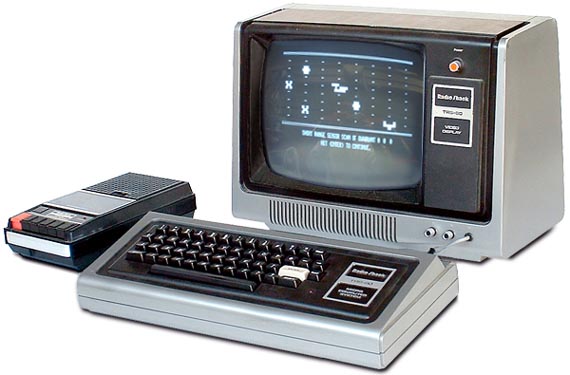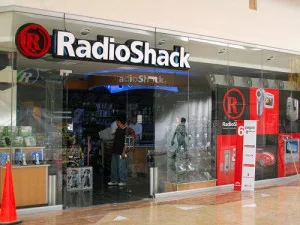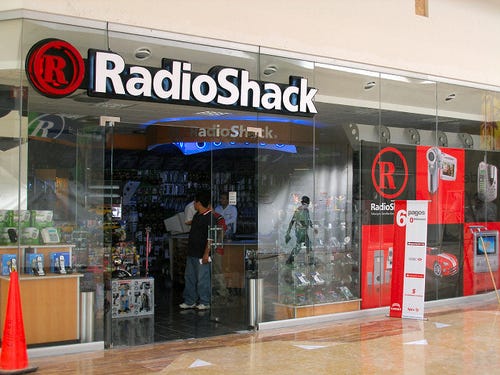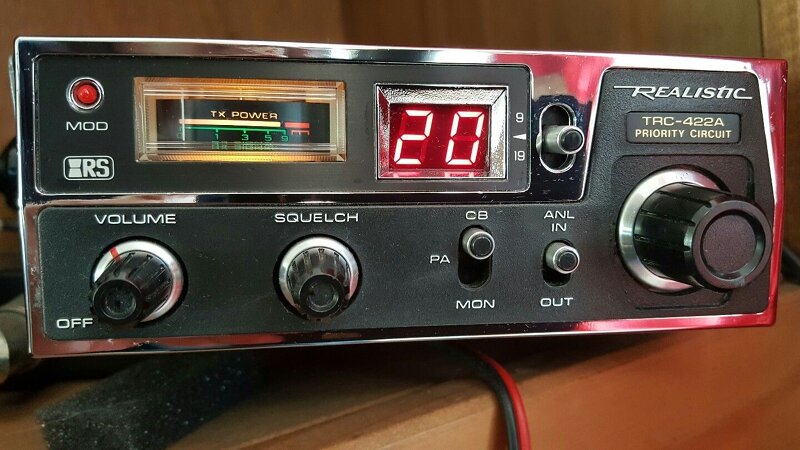A recent press release caused a raised eyebrow here…but perhaps it shouldn’t have. On November 19, Venture capital firm Retail Ecommerce Ventures (REV) “…announced its purchase of certain iconic RadioShack brands and related assets.” According to the press release, REV was founded in 2019 “as a means for giving life to businesses that have struggled to succeed in the age of e-commerce.” (REV also owns the brands Pier 1, Modell’s Sporting Goods, Dress Barn, The Franklin Mint, and Linens N’ Things.)

Radio Shack was an iconic company. It started in 1921 in Boston, MA area as a small electronics specialty shop, primarily catering to experimenters and a growing number of amateur radio operators (of which I have been one for 50 years now with call sign KT2B). Apparently, its name came from the description of the building housing radio equipment on ships and was suggested by an employee, Bill Halligan, who later founded the Hallicrafters Radio company in Chicago, IL.
Over time, the company grew and expanded its footprint in New England, but fell on hard times in the early 1960s after which it was acquired by Charles Tandy of the Tandy Leather Company. After some reorganization, Radio Shack began expanding across the country and around the world, typically in small stores in shopping centers and strip malls. They had a house brand – Realistic – with much of those offerings made in Japan. Radio Shack was also a big retailer of Citizen’s Band (CB) radios in the 1960s and 1970s.
Catering to Tinkerers
Even so, they still catered to electronic hobbyists and tinkerers like me. When I was in junior high and high school in the 1960s, Radio Shack was one of a few local stores where I could buy small parts for my projects. Things like resistors, capacitors, transistors, diodes, connectors, solder (lots of it!), lamps, batteries, and wire made up my diet on the workbench back then. I would also buy a Realistic product now and then, like a clock radio, portable speaker, and even some electronic kits. (I forgot to mention fuses – I popped plenty of those over the years!)
Over time, the Shack added telephones (wired and cordless), televisions, cassette decks, and even some ham radio equipment like handi-talkies. During one summer, my best friend and I worked in a clothing warehouse not far from a Radio Shack store, and we’d go up there at lunchtime, do some window shopping, and B.S. with the affable store manager.
We also played pranks on him – while he was ringing up my purchases one day, my friend quickly set as many clock-radio alarms as he could to go off right after we left the store, turning the buzzers and radio volumes up all the way. It was great fun to watch from the parking lot as the alarms triggered, creating mayhem in the store!
Not All Cheap Junk
Not everything the Shack sold was cheap electronic junk. Their coaxial and speaker cables were of excellent quality, as were their batteries. I installed more than a few Radio Shack TV antennas over the years, manufactured by subsidiary AntennaCraft in Iowa (now shut down). And of course, they introduced the ground-breaking $600 TRS-80 personal computer in 1977, followed by a color version in 1980 that used a television as a monitor.
 The TRS-80, known affectionaltely as the ‘Trash 80’ by some of us (editor)
The TRS-80, known affectionaltely as the ‘Trash 80’ by some of us (editor)
Amazingly, I have a Radio Shack Micronta monochrome LCD stopwatch I bought in the mid-1980s for timing audio tracks, and it still works – and I haven’t changed the button-cell battery in it for over two decades!
An Essential for Hams
For my ham radio friends and myself, Radio Shack was as essential to our lives as the local grocery store, pharmacy, and hardware store. Didn’t matter how small the part was that you needed; they’d have it and at a fair price. I still have several RS universal DC power supplies with a raft of adapter plugs under my test bench, along with small fans, AA battery holders (one is still in the original bag), CATV connectors and tools, fuses (which I don’t have any real need for now), alignment tools, and some unopened packs of resistors and capacitors for a vintage-1952 RCA portable radio I never got around to restoring.
But it’s impossible to make money selling small parts these days. Over time, RS dropped the Realistic brand and started carrying other name brands, like the aforementioned RCA electronics line (now just a licensed brand itself) and mobile phones through AT&T, Sprint, and Verizon. They also added a line of flatscreen TVs while keeping the parts bins, batteries (very popular), and Family Radio Service (FRS) walkie-talkies. I once asked the local store manager what their best-selling product was, and he replied, “replacement iPad and iPhone chargers.”
The End Came Hard
When the end came, it came down hard. Hemorrhaging cash for several years, the company declared bankruptcy in February 2015, and was delisted from the NY Stock Exchange. A second bankruptcy was declared two years later by new owner General Wireless, who had hoped to turn surviving RS stores into Sprint mobile phone retail outlets.
Now, REV has acquired a bunch of authorized dealers and HobbyTown USA affiliate stores, as well as an online commerce site at RadioShack.com. (If you go there now, you’ll find plenty of products listed for sale, and under each and every one, you’ll also see “Sold Out Online.”) Strangely, RS is also selling Personal Protective Equipment (PPE), like non-contact forehead thermometers, face shields, hand sanitizer, and three-layer disposable face masks, all labeled “Coming Soon – Request Notification!”
Apparently, REV feels there is still strong brand equity with Radio Shack, and that it can survive nicely as an online commerce site for people who want to buy electronic gadgets (and iPhone/iPad chargers) and upgrade their homes during the pandemic, especially home offices. There is something to their brand equity argument – during the ten-year period when Sony was losing its shirt selling televisions, it resisted exiting the business and licensing its name as JVC, Hitachi, and Toshiba have. Today, Sony-made and branded televisions still capture decent market share.
A revived RS wouldn’t have much competition from Best Buy, Frye’s, or other electronics specialty stores. Amazon is probably the biggest threat, but it’s possible that RS could remain nichey-enough to coexist with all those smiling boxes. REV claims to have turned around several of their acquired brands and properties quite successfully. Can they revive The Shack for a fifth time, or will it go QRT again?
73, Pete
(Editor’s Note: RadioShack was known as Tandy in the UK from 1973. The name also survives online selling components. I was never a fan of the firm’s products and there were local suppliers such as Maplin that competed at the retail level.)



